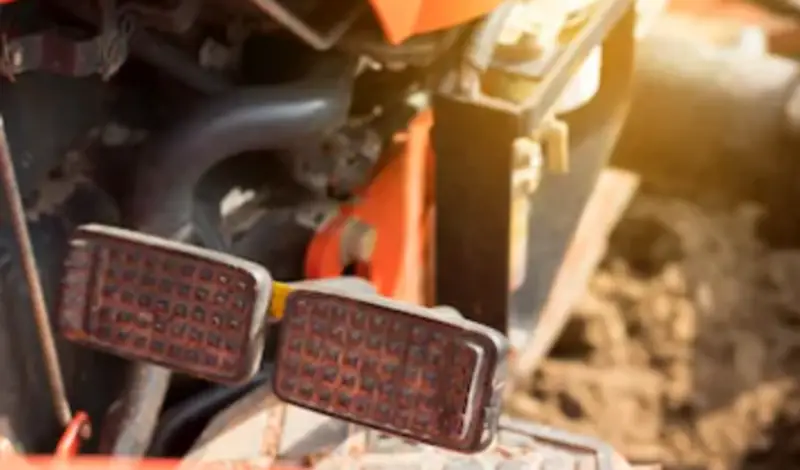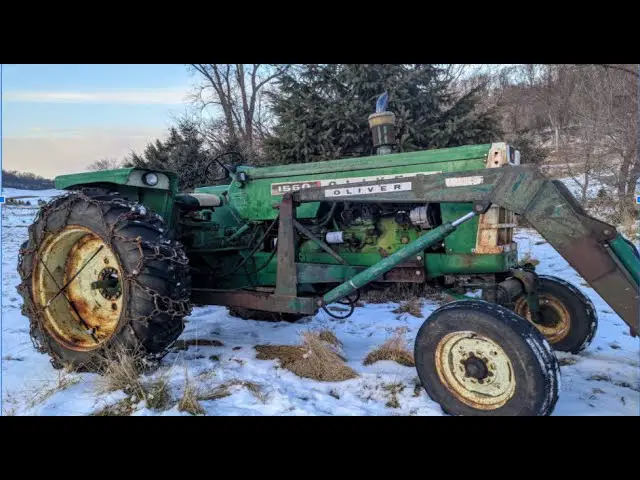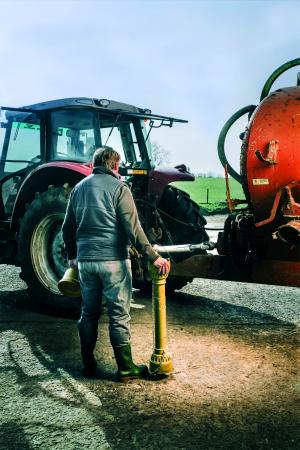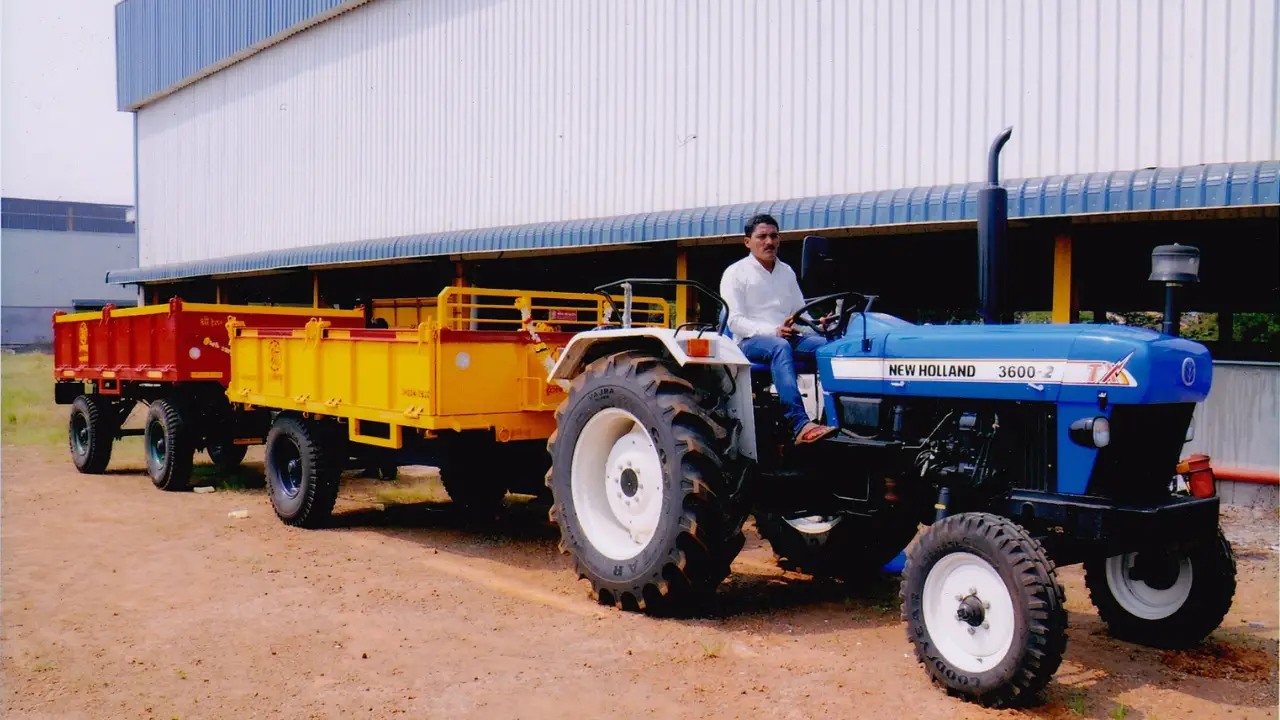This post may contain affiliate links which means I may receive a commission for purchases made through links. Learn more on my Private Policy page.
Maintaining the brakes of your farm machinery is essential for ensuring the safety and efficiency of your operations. In this article, we will explore some simple yet effective techniques that will help you keep your brakes in optimal condition. From regular inspections to the proper lubrication of components, we’ll guide you through the necessary steps to ensure reliable braking performance, so you can focus on the tasks at hand without any worries. So, let’s roll up our sleeves and delve into the world of brake maintenance for farm machinery!

This image is property of t-news.b-cdn.net.
Inspecting the Brakes
Visual Inspection
It is essential to regularly inspect the brakes of your farm machinery to ensure they are in good working order. A visual inspection is the first step in this process. Start by examining the brake components for any visible signs of damage or wear. Look for cracks, corrosion, or excessive rust on the brake discs, drums, calipers, and pads. Additionally, check for any loose or worn-out parts that may need to be replaced.
Checking for Wear and Tear
Another crucial aspect of brake inspection is checking for wear and tear. Inspect the brake pads or shoes to see if they have reached their minimum thickness. If the pads appear too thin or the shoe lining is worn out, it is time to replace them. Additionally, inspect the brake discs or drums for any signs of scoring or uneven wear. Any abnormalities in wear patterns can indicate a problem with the braking system that needs to be addressed promptly.
Examining Brake Fluid Levels
The brake fluid is a vital component of the braking system as it transfers the force applied to the brake pedal or handle to the brake mechanisms. It is important to regularly examine the brake fluid levels to ensure they are within the manufacturer’s recommended range. Locate the brake fluid reservoir, usually mounted on the firewall or near the master cylinder, and check the fluid level. If it is below the designated level, it may indicate a leak in the system or the need for a fluid change.
Cleaning and Lubricating the Brakes
Removing Debris and Dirt
Farm machinery operates in harsh environments, often exposed to dust, mud, and debris. Therefore, it is essential to clean the brakes regularly to remove any accumulated dirt or debris. Start by using compressed air or a brush to remove loose debris from the brake components. Be careful not to inhale any dust or debris during this process. Once the loose dirt is removed, use a damp cloth or a mild detergent to clean the brake surfaces thoroughly.
Applying Brake Cleaner
To ensure optimum brake performance, it is crucial to use a brake cleaner to remove any oil, grease, or brake dust that may have accumulated on the brake components. Brake cleaner can be sprayed onto the brake rotors, drums, pads, and calipers. Allow the cleaner to sit for a few minutes, then use a clean cloth to wipe away the dissolved contaminants. This process will help improve the braking efficiency and reduce noise or vibrations caused by contaminated brake components.
Applying Lubricant
Proper lubrication is essential for the smooth operation of the brake mechanisms. Apply a thin layer of brake lubricant to the contact points of the brake pads or shoes and the caliper or drum. This will reduce friction, enhance brake performance, and prevent premature wear on the brake components. However, it is important to avoid getting any lubricant on the braking surface as this can compromise the braking efficiency.
Adjusting Brake Mechanisms
Checking Brake Pedal/Handle Travel
One of the indicators of brake system issues is excessive brake pedal or handle travel. If you notice that the brake pedal or handle has too much free play before engaging the brakes, it may indicate a need for adjustment. To check for excessive travel, press the brake pedal or squeeze the brake handle gently and observe the distance it travels before the brakes engage. If it extends beyond the normal range, it is advisable to have the brake system inspected and adjusted by a qualified mechanic.
Adjusting Brake Cable Tension
For farm machinery equipped with cable-operated brakes, ensuring proper cable tension is crucial for optimal braking performance. Begin by locating the brake cable adjuster, which is typically found at the brake lever or on the brake mechanism itself. Loosen the lock nut and turn the adjuster until the desired tension is achieved. Ensure that the cable is adjusted evenly on both sides of the brake system to maintain balanced braking. Once the tension is adjusted, tighten the lock nut securely.
Inspecting Brake Pads or Shoes
Regularly inspecting the brake pads or shoes is essential for maintaining safe braking performance. Check for any signs of uneven wear, damage, or contamination. Ensure that the pads or shoes are securely attached to the calipers or brake drums. If any abnormalities are found, such as thinning brake pads or loose shoe linings, it is advisable to replace them promptly to prevent brake failure or further damage to the braking system.
Replacing Brake Components
Identifying Worn Brake Pads or Shoes
Identifying worn brake pads or shoes is crucial for ensuring safe braking performance. Inspect the brake pads or shoes for signs of excessive wear, such as thinning or uneven lining. If the brake pads have reached their minimum thickness or have worn down to the metal, they must be replaced immediately. Similarly, if the shoes show signs of cracking or damaged lining, replacement is necessary to maintain optimal braking effectiveness.
Removing Old Brake Components
Before replacing brake components, it is necessary to remove the old ones carefully. Start by loosening the bolts or clips that secure the brake pads or shoes in place. Depending on the type of braking system, you may need to use a socket wrench, Allen key, or screwdriver to remove the fasteners. Take note of the orientation of the old components and any shims or springs present, as this information will be crucial during the installation of the new brake components.
Installing New Brake Components
When installing new brake components, ensure that you have the correct replacement parts that match the specifications of your farm machinery. Begin by positioning the new brake pads or shoes correctly and securing them in place using the respective bolts or clips. Pay attention to the orientation of any shims or springs, as these are essential for proper brake function. Once the new components are installed, double-check their alignment and ensure that they are securely fastened.

This image is property of cdn.dealerspike.com.
Checking Brake Fluid
Locating the Brake Fluid Reservoir
To check the brake fluid levels, you first need to locate the brake fluid reservoir. In most farm machinery, the reservoir is located near the master cylinder or mounted on the firewall. Consult the owner’s manual or service documentation if you have trouble locating it. Once you have found the reservoir, remove the cap or lid to access the fluid.
Inspecting Brake Fluid Quality
After locating the reservoir, it is crucial to inspect the quality of the brake fluid. The fluid should appear clear or slightly amber, with no signs of cloudiness or contaminants. If the fluid appears dark, contaminated, or has floating debris, it may indicate the need for a brake fluid replacement. Additionally, check for any signs of moisture or water contamination, which can cause brake system corrosion and reduced braking effectiveness.
Refilling or Replacing Brake Fluid
If the brake fluid level is below the designated minimum, it is necessary to top it up with the manufacturer’s recommended brake fluid. Carefully pour the fluid into the reservoir, avoiding spillage on painted surfaces or other components. If the brake fluid appears discolored or contaminated, it is advisable to perform a complete brake fluid flush and replacement. Flushing the system will help remove any moisture or contaminants and ensure the brake system operates at its best.
Maintaining Brake Hydraulics
Checking Brake Lines and Hoses
Regularly inspecting the brake lines and hoses is essential for identifying any signs of damage or leaks. Look for cracks, corrosion, bulges, or fraying along the brake lines and hoses. Pay special attention to the areas near fittings, as these are common areas for leaks to occur. If any abnormalities or signs of leakage are found, it is crucial to have the damaged brake lines or hoses replaced immediately to prevent brake failure or loss of hydraulic pressure.
Bleeding the Brake System
Bleeding the brake system is necessary when air bubbles or moisture have entered the brake lines, compromising their ability to transfer hydraulic pressure effectively. Start by locating the brake bleed valve, usually located on the brake caliper or wheel cylinder. Attach a clear plastic tube to the valve and submerge the other end into a container partially filled with brake fluid. Have an assistant slowly press the brake pedal or squeeze the brake lever while you open the bleed valve. As the fluid flows, any air or moisture trapped in the system will be expelled. Repeat this process until no air bubbles are visible in the fluid.
Inspecting for Leaks
Inspecting for leaks is an important part of brake maintenance. After bleeding the brake system, check for any signs of fluid leakage around the brake lines, calipers, or wheel cylinders. Turn the engine on and gently press the brake pedal or squeeze the brake lever to build hydraulic pressure. Carefully examine the fittings and connections for any signs of fluid seepage. If any leaks are detected, have them repaired immediately to ensure the brake system operates safely and efficiently.

This image is property of blog.machinefinder.com.
Testing Brake Performance
Performing Brake Tests
Regularly testing the brake performance of your farm machinery is crucial for ensuring safe operation. Find a clear and safe area to perform brake tests, ideally on a level surface. Gradually apply the brakes while observing the stopping distance and any unusual noises or vibrations. The brakes should engage smoothly, bringing the machinery to a stop within a reasonable distance. If you notice any abnormalities during the brake tests, such as excessive noise or reduced stopping power, it is advisable to have the brake system inspected and repaired by a professional.
Checking Brake Responsiveness
In addition to evaluating the stopping distance, it is important to assess the responsiveness of the brakes. When you apply the brakes, they should engage promptly and without delay. A delay in brake response can indicate air in the hydraulic system or other issues that may compromise braking effectiveness. If you notice any delays or inconsistencies in brake responsiveness, it is crucial to have the braking system thoroughly inspected and diagnosed by a qualified mechanic.
Verifying Brake Holding Power
Another key aspect of brake performance is the ability to hold the machinery in place when parked or during operation. After bringing the machinery to a stop, engage the parking brake or hold the brake lever firmly in the applied position. Verify that the brake holds the machinery securely and prevents any rolling or movement. If the brakes fail to hold or if there is any slippage, it is essential to have the brake system inspected and adjusted to ensure the safety of the machinery and its operators.
Storing Farm Machinery with Proper Brake Maintenance
Removing Moisture and Corrosion
Before storing your farm machinery, it is important to prepare the brakes to withstand the idle period. Begin by thoroughly cleaning the brake components to remove any dirt, debris, or contaminants. Additionally, inspect the brake system for any signs of moisture or corrosion. If any moisture or corrosion is detected, use a wire brush or sandpaper to remove the rust and apply a rust inhibitor to prevent further corrosion during storage.
Applying a Protective Coating
To safeguard the brake components during storage, consider applying a protective coating. Use a brake-specific protectant spray or a light coating of silicone lubricant on the exposed metal surfaces of the brake system. This protective coating will help prevent moisture, rust, and corrosion from forming on the brake components, ensuring they remain in good condition during the idle period.
Properly Parking the Machinery
When parking the farm machinery for storage, ensure it is on a level surface and engage the parking brake properly. In addition to engaging the parking brake, consider using wheel chocks or blocks to prevent any unintended movement. This will reduce the stress on the brake components and ensure the machinery remains securely in place during storage.

This image is property of i.ytimg.com.
Considering Professional Brake Inspections
Knowing When to Seek Professional Help
While regular maintenance can help prevent many brake issues, there may be instances where professional expertise is necessary. If you notice any persistent warning signs, such as squealing or grinding noises, vibrations, or decreased braking effectiveness, it is advisable to seek professional brake inspections promptly. Additionally, if you are unsure about performing certain brake maintenance tasks or lack the necessary tools, it is best to consult a qualified mechanic to avoid any potential risks.
Finding a Qualified Mechanic
When looking for a qualified mechanic to inspect and service your farm machinery brakes, consider seeking recommendations from fellow farm owners or consulting reputable repair shops. Look for technicians who have experience working with agricultural machinery and who are familiar with the specific brake systems of your equipment. A qualified mechanic will possess the necessary expertise and tools to diagnose and repair any brake issues effectively.
Benefits of Professional Brake Inspections
Professional brake inspections offer several benefits that can contribute to the overall safety and performance of your farm machinery. Qualified mechanics can identify potential brake problems before they escalate into significant issues, helping you avoid costly repairs or potential accidents. Additionally, professional inspections ensure that the brakes are adjusted, lubricated, and maintained to the manufacturer’s specifications, optimizing their performance and longevity. Regular professional inspections also provide peace of mind, knowing that your brake system is in safe working condition.
Promoting Safe Brake Operation
Conducting Regular Safety Inspections
To promote safe brake operation, it is essential to conduct regular safety inspections of the farm machinery. Alongside brake inspections, examine other safety features such as the lights, tires, steering, and overall mechanical condition. Address any identified issues promptly to maintain a safe operating environment for both the operator and those nearby.
Adhering to Manufacturer’s Recommendations
When it comes to brake maintenance, it is crucial to follow the manufacturer’s recommendations. Consult the owner’s manual or service documentation provided by the machinery manufacturer for specific maintenance intervals, brake fluid requirements, and any other guidelines. Adhering to these recommendations ensures that you are providing the best care for your farm machinery’s braking system, maximizing its effectiveness and longevity.
Safe Usage and Handling Practices
Safe usage and handling practices are paramount for preventing accidents and maintaining optimal brake performance. Familiarize yourself with the machinery’s braking capabilities and limitations. Avoid overloading the machinery or exceeding recommended weight capacities, as this can put excessive strain on the brake system. Additionally, practice safe driving or operating techniques, such as maintaining proper speeds, allowing sufficient stopping distances, and avoiding aggressive braking maneuvers. By following safe usage and handling practices, you can minimize the risk of brake failure and promote the overall safety of your farm machinery.
In conclusion, properly maintaining the brakes of your farm machinery is crucial for your safety and the efficient operation of your equipment. Regular inspections, cleaning, lubrication, and adjustment are essential to keep the brakes in good working order. Additionally, monitoring brake fluid levels, maintaining brake hydraulics, and ensuring optimal brake performance through testing are vital aspects of brake maintenance. Storing the machinery with proper brake care, considering professional brake inspections when necessary, and promoting safe brake operation through regular safety inspections and adherence to manufacturer’s recommendations further contribute to a reliable and secure braking system. By following these guidelines, you can ensure the continued safe and efficient operation of your farm machinery’s brakes.

This image is property of www.hseni.gov.uk.
This post may contain affiliate links which means I may receive a commission for purchases made through links. Learn more on my Private Policy page.

